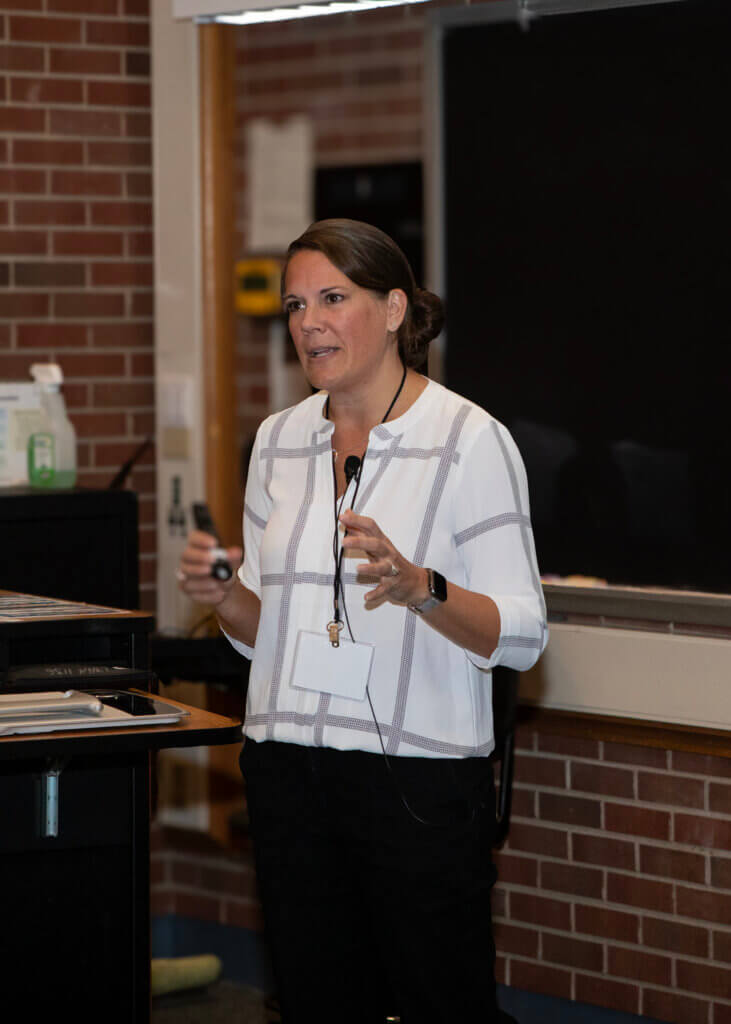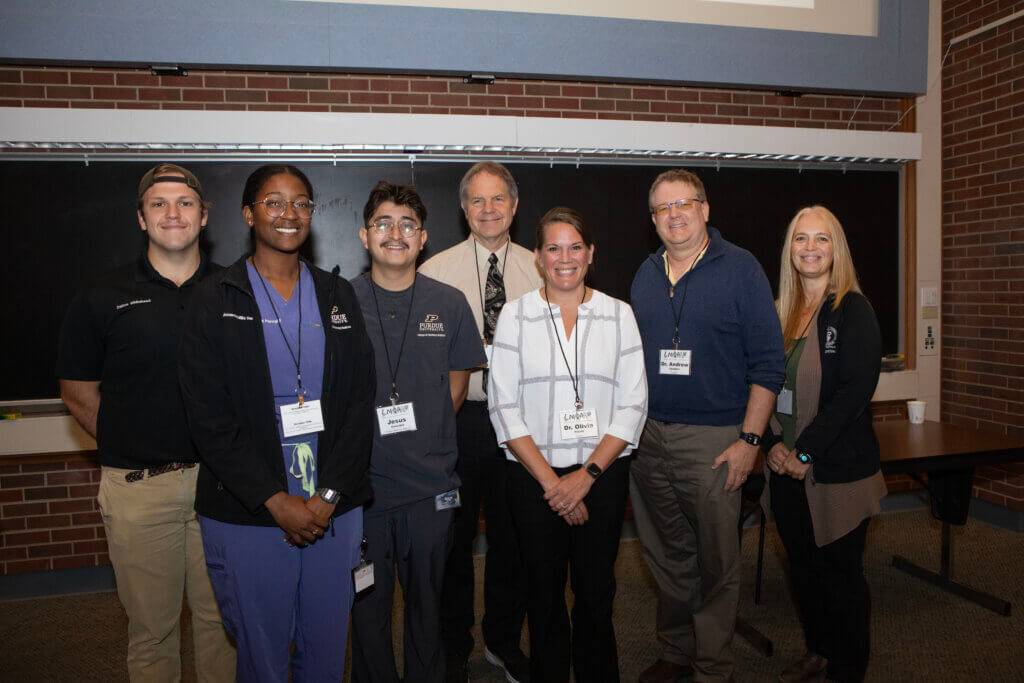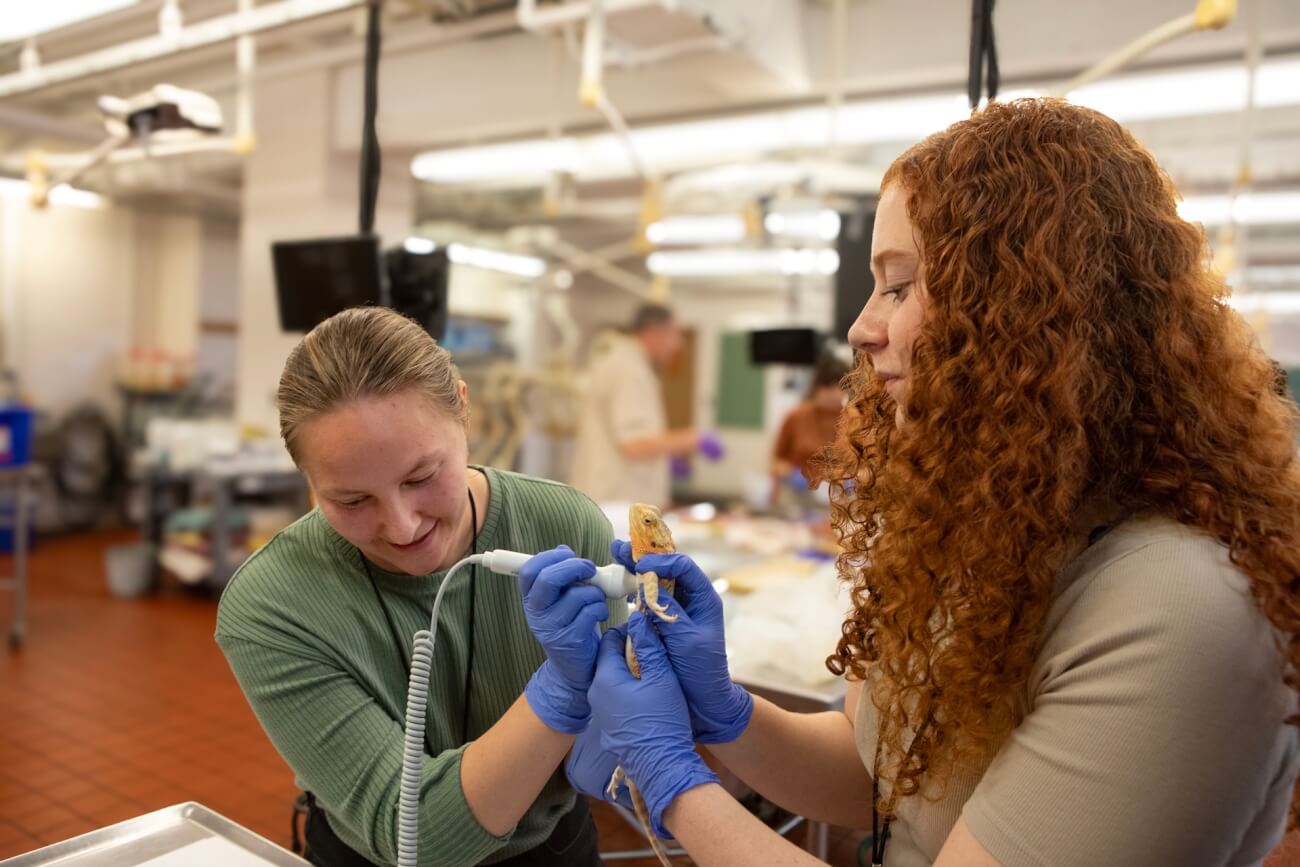Veterinary professionals and students gathered recently at the Purdue University College of Veterinary Medicine to take advantage of a special opportunity to enhance their knowledge and expertise about the care and treatment of aquatic, amphibian, and reptilian species. The fifth biennial Medicine of Aquatics, Amphibians, and Reptiles (MOAAR) Symposium was held October 18–19, at Lynn Hall on Purdue University’s West Lafayette campus, bringing together veterinarians, veterinary technicians, students, and experts dedicated to the care of exotic species.
Hosted by Purdue Veterinary Medicine’s Exotic Animal Medicine Club, this year’s event attracted more than 90 participants, including over 50 in-person attendees from Indiana, Illinois, California, Michigan, Kentucky, Ohio, and Alabama. Another 20 joined in the sessions virtually, including two international participants from Thailand and Canada.
The program offered participants a weekend of engaging lectures, hands-on labs, and networking opportunities focused on aquatic, amphibian, and reptilian medicine. The symposium featured two educational tracks—Reptile/Amphibian and Aquatic—and included presentations by 14 distinguished speakers.
The program opened with a keynote address by Dr. Olivia Petritz, a Purdue alumna who shared her experiences in a session entitled, “Journey to ACZM Board Certification,” during which she talked about the value of becoming board certified by the American College of Zoological Medicine. Dr. Petritz earned both her BS and DVM degrees at Purdue in 2004 and 2008 respectively and then did both a small animal internship and an exotics/zoo internship at specialty private practices before completing an ACZM residency at the University of California, Davis in companion exotics and zoo medicine. She achieved board certification in November 2013 and went on to found an exotics service at a specialty hospital in Los Angeles. After working there for three years, she accepted an appointment on the faculty of NC State’s College of Veterinary Medicine, where she currently serves as an associate professor and works in the Exotic Animal Medicine Service.

“I was so appreciative of this opportunity to share my journey with those students who are just starting theirs—a true full circle moment,” Dr. Petritz said as she reflected on the opportunity she had to come back to her alma mater to speak to today’s veterinary students. “I hope the students found the talk both informative and inspiring!”
Another Purdue graduate who served as a featured speaker is Dr. Andrew (Andy) Stamper who earned his Purdue DVM degree in 1993 and has championed marine conservation for nearly 40 years. While in veterinary school at Purdue, Dr. Stamper had the opportunity to spend time working in Prince William Sound, Alaska assessing the effects of the Exxon Valdez oil spill on marine animal health. After achieving board certification in zoo and aquatic animal medicine, he became the head veterinarian at the New England Aquarium and oversaw the Veterinary and Marine Animal Rescue/Rehabilitation programs. During the past 24 years, he has worked with Disney’s Animal Programs and Cruise Line focusing on marine animal and ecosystem health including corals, fish, sharks, sea turtles, manatees, and dolphins.
Other topics addressed at the MOAAR Symposium on Saturday included herptile handling techniques, fish health assessment, reptile therapeutics, and amphibian imaging. Wet labs provided participants with hands-on learning experiences in reptile anatomy, diagnostic imaging, and fish anesthesia and surgery.
A highlight of Sunday’s symposium schedule was the keynote presentation entitled, “Introduction to Marine Mammal Medicine,” delivered by Dr. Karisa Tang, an associate veterinarian at Chicago’s Shedd Aquarium. Dr. Tang provided valuable insights into marine mammal health and conservation. Additional Sunday sessions focused on Chelonian surgery, fish diseases, reptile emergencies, and shark anatomy.
Click here for a complete list of symposium speakers.


